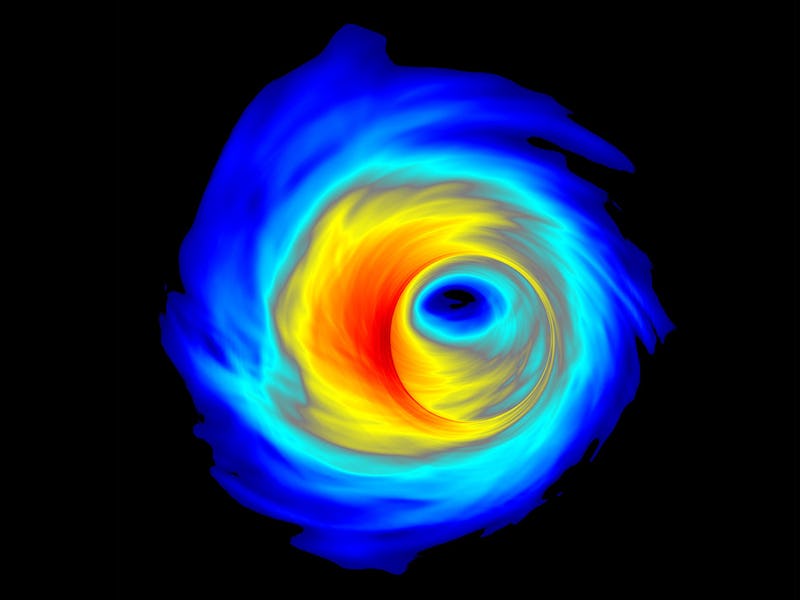Could Pac-Man explain how black holes are merging?
Research published last week in the journal Physical Review Letters looked at how these celestial objects merge together, which remains something of a mystery. The paper suggests that these mergers come from an accretion disk that forms around a black hole, bringing two of the objects together. As the new, larger black hole starts merging with other smaller holes in a similar fashion, it exhibits what Richard O’Shaughnessy describes as “Pac-Man-like” behavior.
“It offers unique insight into how the centers of galaxies grow, which is of course essential to understanding how galaxies as a whole grow, which explains most of the structure in the universe,” O’Shaughnessy, assistant professor at the Rochester Institute of Technology, said in a statement.
As the LIGO and Virgo observatories hunt for more black hole waves, it seems the lovable circular video game character could explain how and why these mergers occur.
Pac-Man: a role model for black holes?
Pac-Man, which first made its debut in 1980, focuses on the titular ball moving around a maze and eating smaller pellets. When the character eats a sightly larger pellet, the enemy ghosts temporarily change color, enabling the player to gobble them up.
The black hole’s behavior also bears similarity to the ball-rolling game Katamari Damacy, where players must roll up objects to create a bigger ball and capture even bigger objects.
The team explains that the black holes merge through what is believed to be an accretion disk. That’s where a supermassive black hole causes matter like gas, stars, and dust to form and start swirling around the object. When a black hole is caught in the disk, it moves toward the center to create a larger black hole and eventually devour others.
Scientists have so far identified gravitational waves emanating from 10 different black hole mergers. This is thanks to work at the Virgo observatory and Advanced Laser Interferometer Gravitational-Wave observatory, the latter also known as LIGO. The pair was able to detect a neutron star collision for the first time.
A black hole.
The largest black hole merger ever recorded raised questions for researchers, as it seemed to defy existing simulations. The larger merger had a much higher mass and greater spin than previously considered possible.
The team behind the newest paper produced a simulation on their theory. They now hope to find more black hole mergers, put it through the simulation and see if their assumptions are correct. This could solidify their theory.
“This is a very tantalizing prospect for those of us who work in this field,” said O’Shaughnessy. “It offers a natural way to explain high mass, high spin binary black hole mergers and to produce binaries in parts of parameter space that the other models cannot populate. There is no way to get certain types of black holes out of these other formation channels.”
Thanks to the work of one inspiring little blob of pixels, we may now better understand our universe.
Read the abstract below:
The origins of the stellar-mass black hole mergers discovered by LIGO/Virgo are still unknown. Here we show that if migration traps develop in the accretion disks of active galactic nuclei (AGNs) and promote the mergers of their captive black holes, the majority of black holes within disks will undergo hierarchical mergers—with one of the black holes being the remnant of a previous merger. 40% of AGN-assisted mergers detected by LIGO/Virgo will include a black hole with mass ≳50M^^⊙, the mass limit from stellar core collapse. Hierarchical mergers at traps in AGNs will exhibit black hole spins (anti)aligned with the binary’s orbital axis, a distinct property from other hierarchical channels. Our results suggest, although not definitively (with odds ratio of ∼1), that LIGO’s heaviest merger so far, GW170729, could have originated from this channel.
